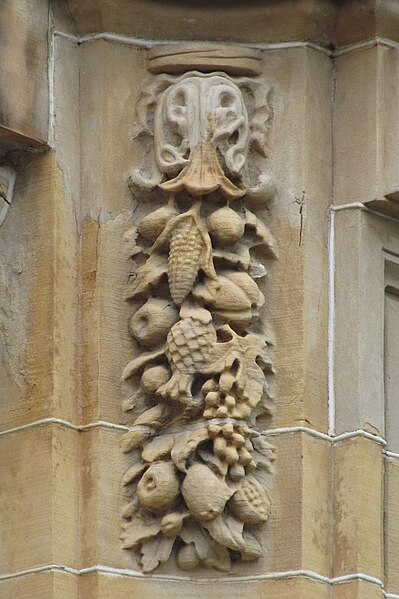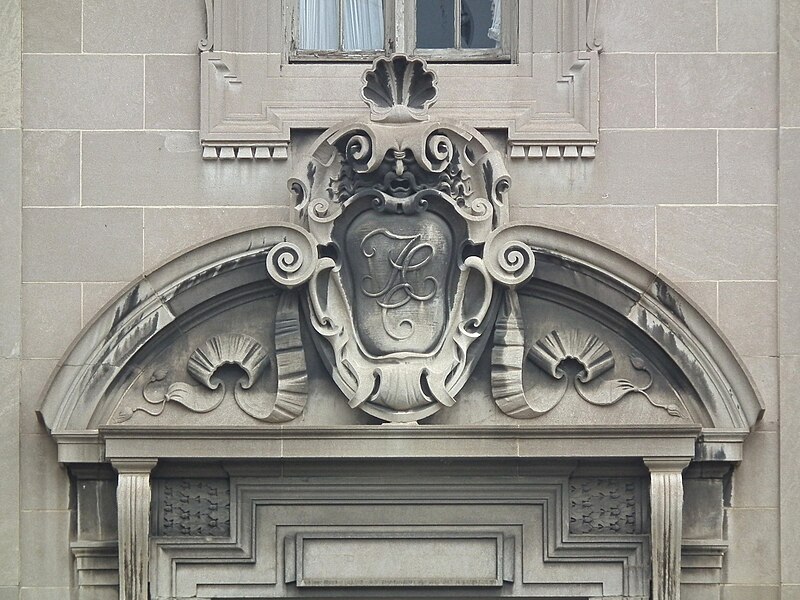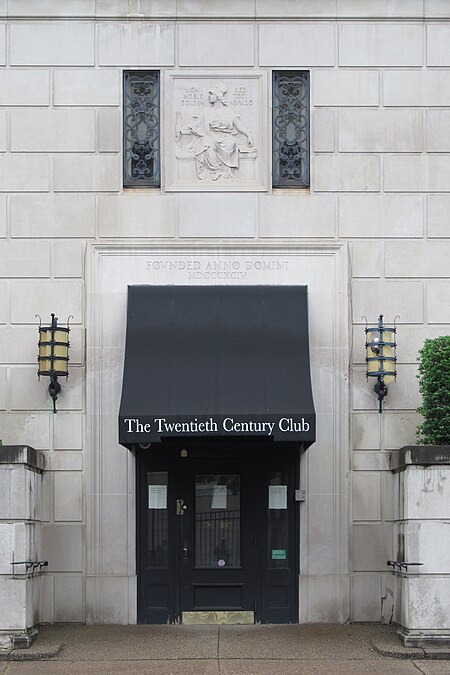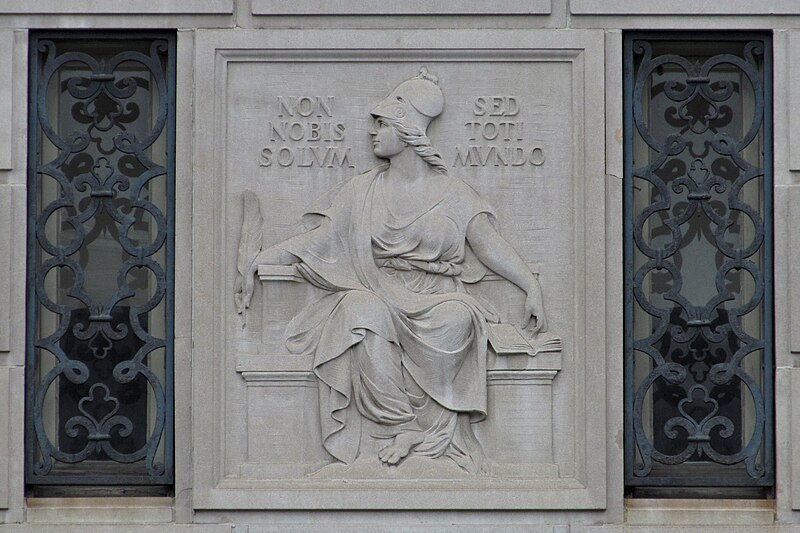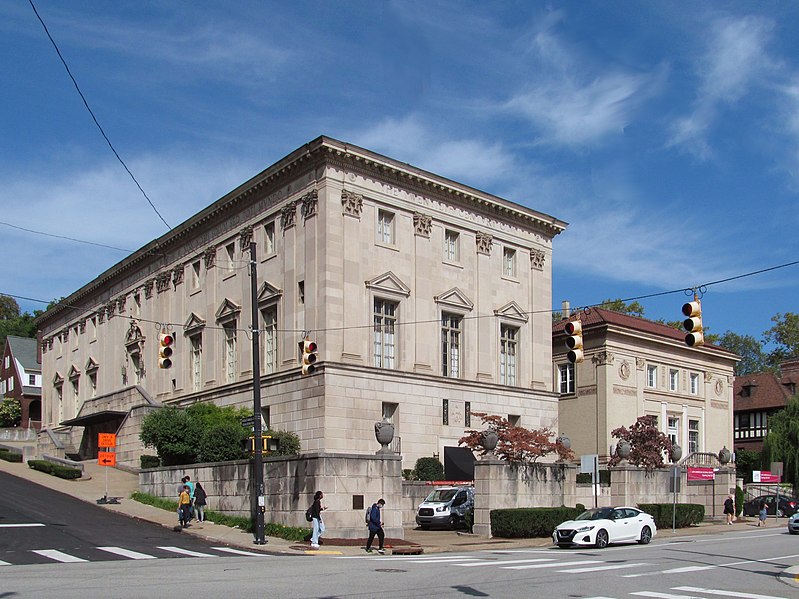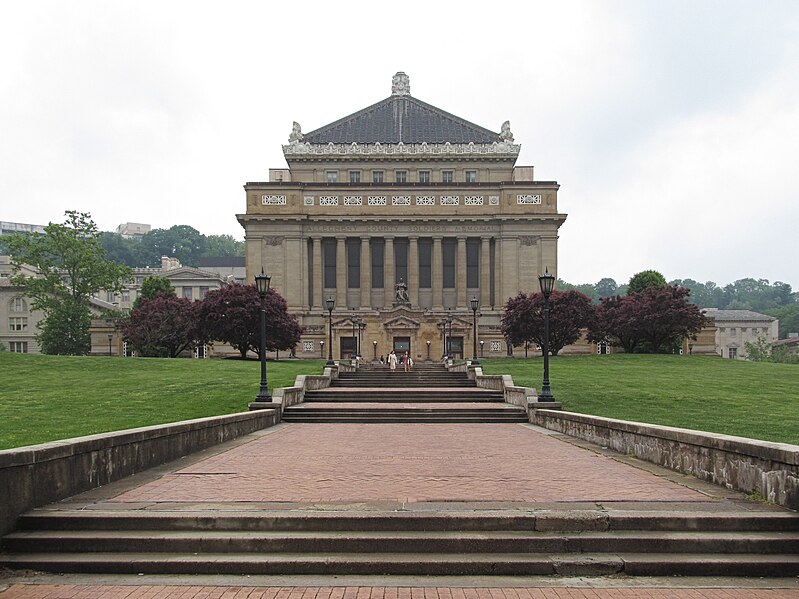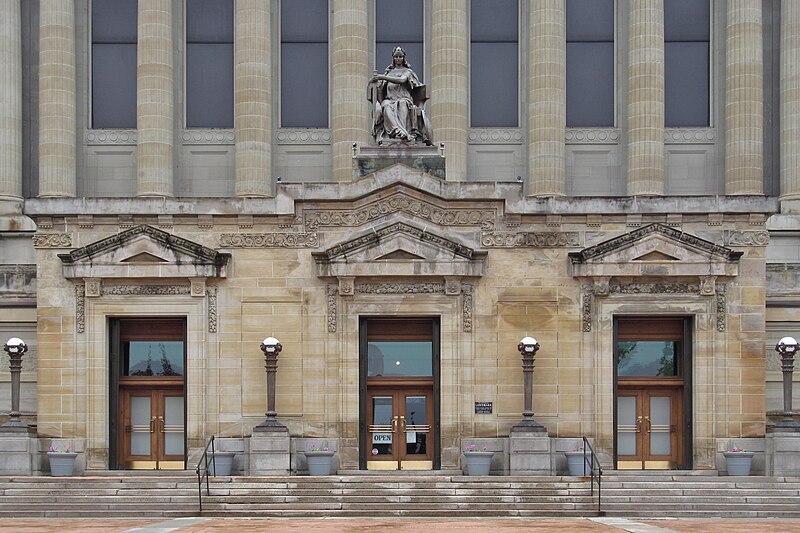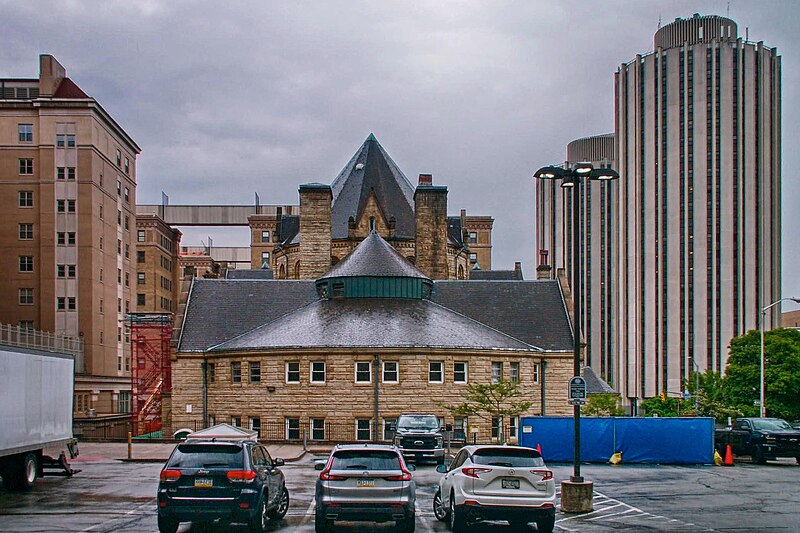
Pedestrians and drivers often see the front of this magnificent Romanesque church, but few ever notice the back. It is plainer but still interesting in its masses, with the half-round auditorium characteristic of many Methodist and Presbyterian churches in the late 1800s.
The front (seen below in a picture from last year) is also given a round bulge, so that the whole building seems to orbit around that polygonal central tower.

Old Pa Pitt will repeat what he said the last time he published pictures of Bellefield Presbyterian Church:
The church was built in 1896 as the First United Presbyterian Church; the architect was William Boyd, who gave the congregation the most fashionably Richardsonian interpretation of Romanesque he could manage. It was more or less in competition with the original Bellefield Presbyterian, of which only the tower now remains. But in 1967 the two congregations merged. They kept this building, renamed it Bellefield Presbyterian, and abandoned the old Bellefield Presbyterian up the street, which was later demolished for an office block.


